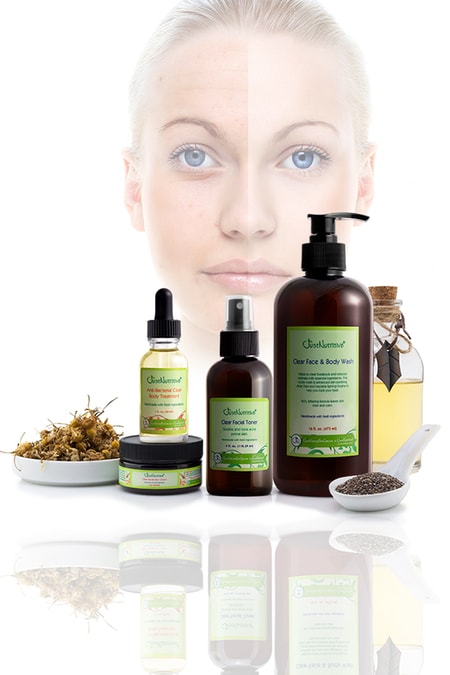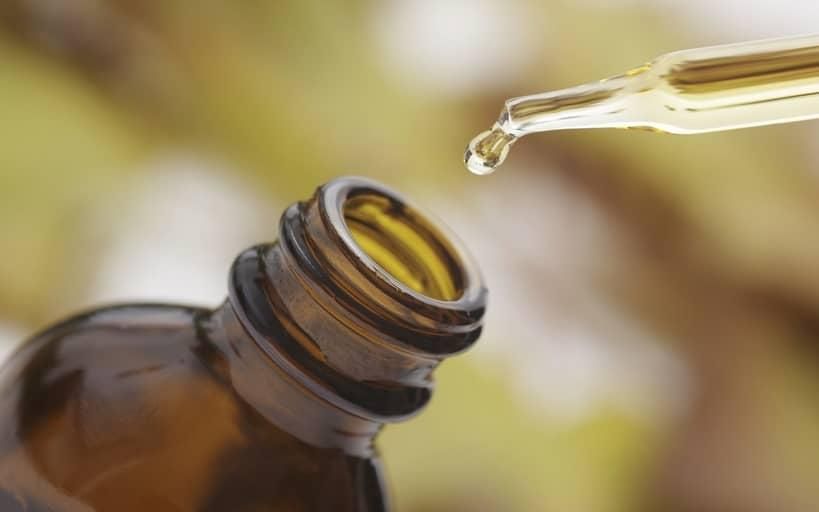Acne breakouts, both “teenage” and adult, are due to a combination of factors including the proliferation of bacteria, inflammation, and hormonal imbalance. Teenage acne also involves a temporary overproduction of skin oils, as well as a thickening of the skin — factors which lead to further inflammation and conditions for bacterial growth.
Using essential oils for treating both teenage and adult acne is a smart choice, as you can create a blend of oils which address every aspect of the condition. Here we’ll look at creating a blend that does just this, by selecting from groups of oils with the desired effects (be aware that several oils will have multiple properties) and basing them in therapeutic carrier oils (which actually have been successful at treating acne themselves).
First examining the antiseptics, the choice for many people is tea tree essential oil. It has been the gold standard of topical antiseptic essential oils. It is readily available, inexpensive, and actually “proven” effective. A recent study was produced comparing the efficacy of tea tree to oxybenzone, the most popular over-the-counter active ingredient for acne treatment. A 5% tea tree formulation was found to be as effective as a 5% benzoylperozxide preparation, without side effects (benzoylperoxide can cause drying and peeling).

Then there’s the important balancing of sebum secretion. Green myrtle essential oil is actually both balancing and a potent antibacterial. Like tea tree, it has been suggested as a treatment all by itself, and may work better for may individuals. If you’re seeking a single oil for direct application, consider experimenting with myrtle and tea tree — finding the one that works best for you. Myrtle will work synergistically with tea tree in an overall acne treatment blend.
Somewhat less potent of an antibacterial, but perhaps a more important oil for sebum balance and overall skin health is rosewood. You’ll find rosewood included in a great many skin care formulas, and is an especially good choice for adult acne care. If you choose rosewood for your blend, look for one from a sustainable source, or from a location other than Brazil, such that it’s not from wild-grown trees in the Amazon rainforest.
To summarize a few other highly-regarded oils for acne-care blends: Lavender essential oil may be the most commonly used essential oil in all of skin and hair care. It is thought to synergize — or tie together — all other oils in a formula. It is known for its anti-inflammatory and wound healing actions.
Spike lavender, sort of a cross between sage and lavender, is a more potent antiseptic, if you feel you need something stronger in that respect. Myrrh has been used for skin care for thousands of years, with an excellent combination of antiseptic and healing actions. Sandalwood, too, is a soothing, protective, and balancing oil to include in adult-care formulas where the skin may be dry.
You may find other sources discussing the use of citrus oils, particularly lemon and bergamot. While these oils can be highly effective, their topical use on the face doesn’t make sense due to their photo-toxicity. Once applied, they will make that area of the skin hyper-sensitive to sunlight for the next day or two. As there are so many other excellent choices, use of citrus oils for acne care should be avoided altogether.
As mentioned, essential oils can be dabbed (not rubbed!) directly on pimples. However, for treating any area — and limiting future outbreaks in that area — you’ll want to create a blend of oils in a carrier. While there are many choices, the best are oils that have their own therapeutic activity. The two most well-known are coconut and tamanu nut oils; both are naturally antiseptic, and have been used by some individuals to successfully treat acne alone. Equal parts of these oils will create a simple, effective base to which you’ll add your essential oils.
Creating you blend is a simple process: chose up to 4 essential oils and measure them into an empty bottle. Create a blend with a total of around 5% essential oil concentration: 1 milliliter, or 20 drops, of essential oil in each ounce is a 3% concentration — 7 drops of essential oil in each ounce is 1%. This means you can use around 35 drops total (from a standard glass eyedropper) of essential oils in each ounce of base. You may want to measure the number of drops per ml using a measuring pipette.
On to the recipes! These are the number of drops of essential oil in one ounce of carrier. To make two ounces, simply double the number of drops. So for your base, mix equal parts of virgin coconut, tamanu and grapeseed oils (or just tamanu and coconut, if you don’t mind the thickness). For teenage acne, use 14 drops each tea tree, spike lavender and myrtle. For adult acne with oily skin, use 9 drops each myrtle, tea tree, rosewood and lavender. For adult acne with dry to normal skin, use 7 drops each tea tree, spike lavender, rosewood, myrrh and sandalwood. Please feel free to adjust these recipes, depending on your intuition and the oils you have on hand. Using 3 or more of any of these essential oils together in the carrier oils mentioned should produce effective results for nearly any acne condition.



